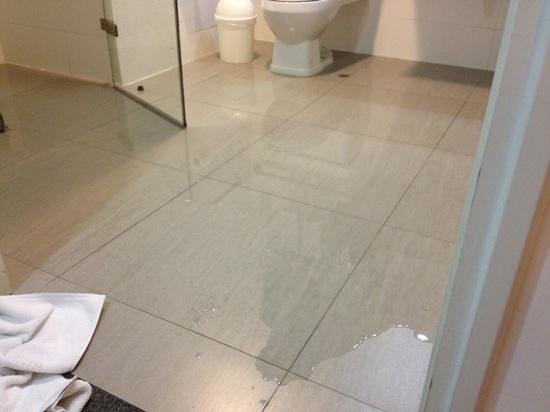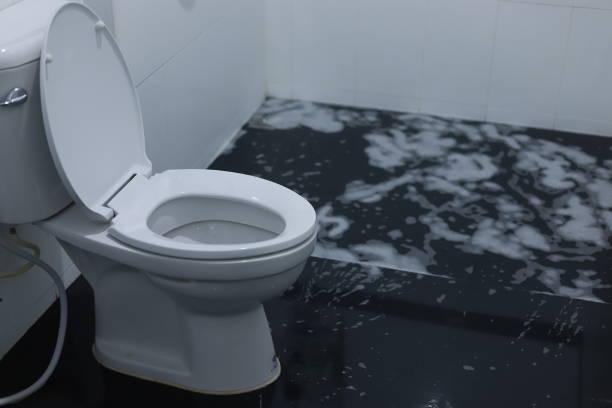This article listed below about How to Repair and Prevent Bathroom Water Damage? is indeed fascinating. Don't bypass it.

Water damage commonly takes place in the shower room due to the water used day-to-day. Occasionally, the damages could be a little mold from the shower. Other times, it's huge damage on your flooring. Whatever it is, it is constantly good to understand the cause and stop it prior to it occurs.
This guide will certainly undergo a few of the common reasons for water damage in the bathroom. We will certainly likewise examine what you can do to stop these reasons from damaging your bathroom. Allow's dive in.
These are the typical reasons you would certainly have water damage in your washrooms as well as how you can detect them:
Excess Wetness
It's amazing to have that long shower and also sprinkle water while you hem and haw and also act like you're performing, yet often these acts could create water damage to your restroom.
Spraying water around can trigger water to go to edges as well as form mold and mildews. View just how you spread excess dampness around, as well as when you do it, clean it up to stop damage.
Splits in your wall surface tiles
Washroom wall floor tiles have been particularly developed for that objective. They secure the wall surface from dampness from people taking showers. Nevertheless, they are not indestructible.
Often, your bathroom wall floor tiles fracture and also allow some dampness to seep right into the wall surface. This could possibly destroy the wall if you do not take any action. If you see a fracture on your wall surface tiles, fix it quickly. Don't wait up until it damages your wall.
Overflowing commodes and also sinks
As humans, often we make mistakes that could trigger some water damage in the washroom. For example, leaving your sink tap on might create overflowing and also damages to other parts of the restroom with wetness.
Additionally, a faulty toilet might trigger overruning. For example, a damaged bathroom take care of or other parts of the cistern. When this happens, it might harm the flooring.
As quickly as you see an overflowing sink or bathroom, call a plumbing technician to aid deal with it right away.
Ruptured or Dripping Pipelines
There are several pipelines carrying water to different parts of your restroom. Some pipes take water to the bathroom, the sink, the taps, the shower, as well as numerous other locations. They crisscross the little area of the washroom.
Once in a while, these pipes could get rusty and also ruptured. Other times, human activity can create them to leakage. When this occurs, you'll find water in the corners of your shower room or on the wall surface.
To spot this, look out for bubbling wall surfaces, molds, or mildew. Call a professional emergency plumber to repair this when it takes place.
Roof covering Leakages
Often, the issue of water damage to the washroom may not come from the restroom. For example, a roof leakage might trigger damage to the washroom ceiling. You can detect the damages done by considering the water spots on the ceiling.
If you discover water stains on your ceiling, examine the roofing to see if it's damaged. After that, call a specialist to assist solve the issue.
Verdict
Water damage to your shower room can be frustrating. Nevertheless, you can handle it if you protect against a few of the causes pointed out in this guide. Call a professional emergency situation plumber if you observe any kind of severe damage.
How to Repair a Water-Damaged Wall in the Bathroom
All you need to know to repair bathroom wall water damage – from identifying the water source to finishing the repair professionally. If you don’t act quickly to resolve a water damage problem, you could find that it develops into a mold issue and/or cause structural damage to your home. Follow this guide to repair your bathroom before it's too late.
All you need to know to repair bathroom wall water damage
Water damage is a common household problem, and one that, if left unrepaired, can quickly lead to structural problems and health issues. The two most likely rooms where water damage may occur is the bathroom and the kitchen – where water is used often and there is high humidity.
What is water damage?
It is easy to think of water damage as caused by a flood or leaking tap or burst water pipe. However, when water damage is assessed, there are three main categories into which water falls (as classified by the American National Standards Institute). These categories are defined as:
Category 1 Water – ‘Clear Water’
This is sanitary water. There is usually no major threat to health by washing with this water, drinking it, or inhaling if it is streaming. Most water that enters your home will be category 1 water, while most water leaving your home will be either category 2 or 3 water. It may also come from melting snow, rainwater and water tanks.
Damage caused by this type of water can usually be repaired or restored, though this doesn’t mean that there are no potential health issues.
Category 2 Water – ‘Grey Water’
This is contaminated water – sometimes considerably so – and will cause illness if consumed or if it comes into contact with your skin. Water damage in this category is often caused by overflows from toilet bowls, and damage to washing machines and dishwashers. While damaged items might still be repaired or restored after damage by grey water, it is more difficult and more expensive to do so.
If the water damage in your home has been caused by grey water, it is advisable to have repairs made by professionals.
Over time, grey water will deteriorate and become black water.
Category 3 Water – ‘Black Water’
Category 3 water, also known as black water, is highly contaminated and a great risk to health. This may contain raw sewage, heavy metals, and other toxic substances. It will smell terrible.
If this is the water that has caused damage in your bathroom, do not touch it. Stop the water flowing if possible, seal the room and call the experts: it really isn’t worth the risk of ill health and disease that could be fatal. It is very unlikely that items can be repaired or restored if they have been damaged by black water.
https://www.porterscleaning.com/blog/how-to-repair-a-water-damaged-wall-in-the-bathroom/

I'm very focused on How to Repair and Prevent Bathroom Water Damage? and I'm hoping you liked our piece. If you please take the time to distribute this blog posting if you enjoyed it. Many thanks for your time invested reading it.
Act, don't delay!